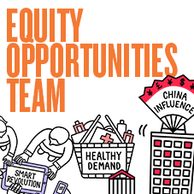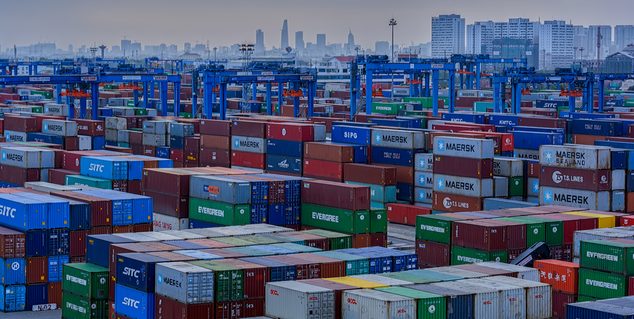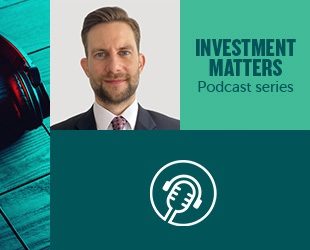Grand Designs
In May 2017, China’s President Xi Jinping officiated at the largest event to take place in Beijing since the 2008 summer Olympics. Delegates from some 130 countries attended, as did 29 heads of state- including Russia’s Vladimir Putin and Turkey’s Recep Tayyip Erdoğan. The heads of the United Nations, the International Monetary Fund and the World Bank were also in attendance.
The agenda: the official launch of a latter-day Silk Road – a vast infrastructure project spanning three continents, linking China with Europe, central Asia, the Middle East and Africa by road, rail, sea and air.
In his speech marking the launch, President Xi Jinping drew comparisons between the historic Silk Road (think camels laden with silks and spices winding their way through vast steppes and deserts) and the modern One Belt One Road (OBOR) project.
According to President Xi, the development will “unleash new economic forces for global growth, build new platforms for global development and rebalance economic globalization so mankind can move closer to a community of common destiny”.[1]
Rhetoric or Reality?
The rhetoric is bold and ambitious, but the key question for investors is whether the hype can match the reality. Will the grand visions encompassing everything from power stations to gas pipelines, technology hubs to motorways reach fruition, or – like so many centrally mandated infrastructure grand projects of the past – fizzle out in the face of hard facts?
OBOR is stunning in its scope. With an estimated price tag of some U.S.$900bn,[2] the scheme has rightly drawn comparisons with the Marshall Plan, the monumental U.S. economic support effort that helped rebuild Western Europe at the end of the Second World War. It encompasses roughly 60% of the world’s population and around 30% of global GDP,[3] and has the potential to create enormous prosperity for the people living in the countries it affects.
Mixed Motives
Nevertheless, we believe investors should not be dazzled by the project’s scale, but should take a considered view of the project and what it could achieve. For one thing, like the Marshall Plan before it, OBOR is about more than just economics; it also serves a set of wider geopolitical and strategic ends.
Crucially, OBOR should help to reduce China’s dependence on the Straits of Malacca, the narrow sea lane separating the Malay Peninsula from Sumatra, through which most of China’s imports and exports flow. Around 80% of China’s oil imports pass through this strategic choke point, which makes Chinese prosperity immensely vulnerable to any form of maritime embargo.
A new port alongside rail and road links in Pakistan provides direct access to the Indian Ocean and the Gulf, while pipeline agreements such as the Central Asia-China natural gas pipeline, which runs from Turkmenistan through Uzbekistan and Kazakhstan to Western China, will allow unrestricted overland transshipment of oil and gas. Russian exports of coal, oil and energy to China are also expected to rise as rail links and pipelines between the two countries improve.
OBOR also fulfils another vital strategic goal: the soaking up of China’s vast excess industrial capacity. Chinese companies are expected to dominate the construction phase of many of the larger infrastructure projects, with Chinese materials likely to be used. This should take the pressure off domestic overcapacity in sectors such as steel, cement and aluminum – and we would expect China’s heavy industry sector to see direct benefits as a result.
Bumps in the Road
While the strategic rationale of OBOR might make sense for China, there are still question marks over how much of what has already been announced will actually come to pass. In railways, for example, high-speed projects associated with OBOR in Libya, Mexico, Myanmar, Venezuela and Indonesia have either been cancelled or are facing major delays. According to an investigation by the Financial Times, cancellations and delays account for at least 25% of the combined U.S.$143bn value of overseas high-speed rail schemes initially announced as part of OBOR.[4]
The One Road maritime strategy has been far from plain sailing too. Even though China has secured contracts to build a port in Myanmar, a deal with Bangladesh fell through in 2016 when Dhaka opted for an offer from Japan instead. A U.S.$1.1bn deal to construct Hambantota Port in Sri Lanka was scaled back after it sparked protests – and other projects from Europe to Africa have been met with differing degrees of suspicion as to China’s true intentions.
We see this as an important sticking point. Neither Japan nor the U.S. are directly involved in OBOR. India – a key regional player – was also notable by its absence from the May launch event in Beijing. Partly this was a response to China’s involvement in the U.S.$62bn China-Pakistan economic corridor, which exacerbated regional tensions, not least because part of the development is in the disputed border region of Gilgit-Baltistan.
China has moved from a predominantly agricultural economy to its current status as the manufacturing hub of the world, and has made further progress in rebalancing towards a consumer-driven model. But if it wants its grand vision of OBOR to be a success, we would emphasize that part of its strategy will need to be about addressing the concerns of countries like India, the U.S. and Japan, which can be said to be ambivalent about OBOR at best.
Deal or No Deal
Notwithstanding these considerations, recent data highlights how at least some parts of OBOR seem to be gaining a head of steam. During the May launch event, for example, China signed 270 cooperation deals, covering telecommunications, infrastructure development, trade promotion and finance.[5] Year to date, we calculate that Chinese acquisitions in the 68 countries officially linked to OBOR totaled U.S.$33bn, surpassing the U.S.$31bn tally for the whole of 2016. This rise is all the more remarkable given that it came against a 42% fall in overall outbound mergers and acquisitions (M&A) from China.[6]
At first sight, the numbers are impressive, but here too other factors could be at play. We know China has cracked down on foreign investment, tightening capital controls and raising restrictions on foreign M&A – but this doesn’t seem to have staunched the enthusiasm for investment in OBOR projects.
For us, this raises the question: is investment by Chinese firms in the New Silk Road simply capital flight by another name? If so, we could simply be looking at gross misallocation of capital.
[1] President Xi Jinping, May 2017.
[2] Financial Times: ‘One Belt, One Road – and many questions’, 14 May 2017.
[3] Fund Business Intelligence Centre: ‘The Belt and Road Initiative: 65 Countries and Beyond’, May 2016.
[4] Financial Times: ‘China’s railway diplomacy hits the buffers’, 17 July 2017.
[5] Reuters: ‘Exclusive: China’s Belt and Road acquisitions surge despite outbound capital crackdown’, 16 August 2017.
[6] https://www.ft.com/content/f40ea726-82cb-364f-8e5f-03a35b49ad70?mhq5j=e6
This is a financial promotion. Material in this publication is for general information only. The opinions expressed in this document are those of Newton and should not be construed as investment advice or recommendations for any purchase or sale of any specific security or commodity. Certain information contained herein is based on outside sources believed to be reliable, but its accuracy is not guaranteed. You should consult your advisor to determine whether any particular investment strategy is appropriate. This material is for institutional investors only. Any reference to a specific security, country or sector should not be construed as a recommendation to buy or sell this security, country or sector. Please note that strategy holdings and positioning are subject to change without notice.
Important information
This is a financial promotion. Issued by Newton Investment Management Limited, The Bank of New York Mellon Centre, 160 Queen Victoria Street, London, EC4V 4LA. Newton Investment Management Limited is authorized and regulated by the Financial Conduct Authority, 12 Endeavour Square, London, E20 1JN and is a subsidiary of The Bank of New York Mellon Corporation. 'Newton' and/or 'Newton Investment Management' brand refers to Newton Investment Management Limited. Newton is registered in England No. 01371973. VAT registration number GB: 577 7181 95. Newton is registered with the SEC as an investment adviser under the Investment Advisers Act of 1940. Newton's investment business is described in Form ADV, Part 1 and 2, which can be obtained from the SEC.gov website or obtained upon request. Material in this publication is for general information only. The opinions expressed in this document are those of Newton and should not be construed as investment advice or recommendations for any purchase or sale of any specific security or commodity. Certain information contained herein is based on outside sources believed to be reliable, but its accuracy is not guaranteed. You should consult your advisor to determine whether any particular investment strategy is appropriate. This material is for institutional investors only.
Personnel of certain of our BNY Mellon affiliates may act as: (i) registered representatives of BNY Mellon Securities Corporation (in its capacity as a registered broker-dealer) to offer securities, (ii) officers of the Bank of New York Mellon (a New York chartered bank) to offer bank-maintained collective investment funds, and (iii) Associated Persons of BNY Mellon Securities Corporation (in its capacity as a registered investment adviser) to offer separately managed accounts managed by BNY Mellon Investment Management firms, including Newton and (iv) representatives of Newton Americas, a Division of BNY Mellon Securities Corporation, U.S. Distributor of Newton Investment Management Limited.
Unless you are notified to the contrary, the products and services mentioned are not insured by the FDIC (or by any governmental entity) and are not guaranteed by or obligations of The Bank of New York or any of its affiliates. The Bank of New York assumes no responsibility for the accuracy or completeness of the above data and disclaims all expressed or implied warranties in connection therewith. © 2020 The Bank of New York Company, Inc. All rights reserved.





